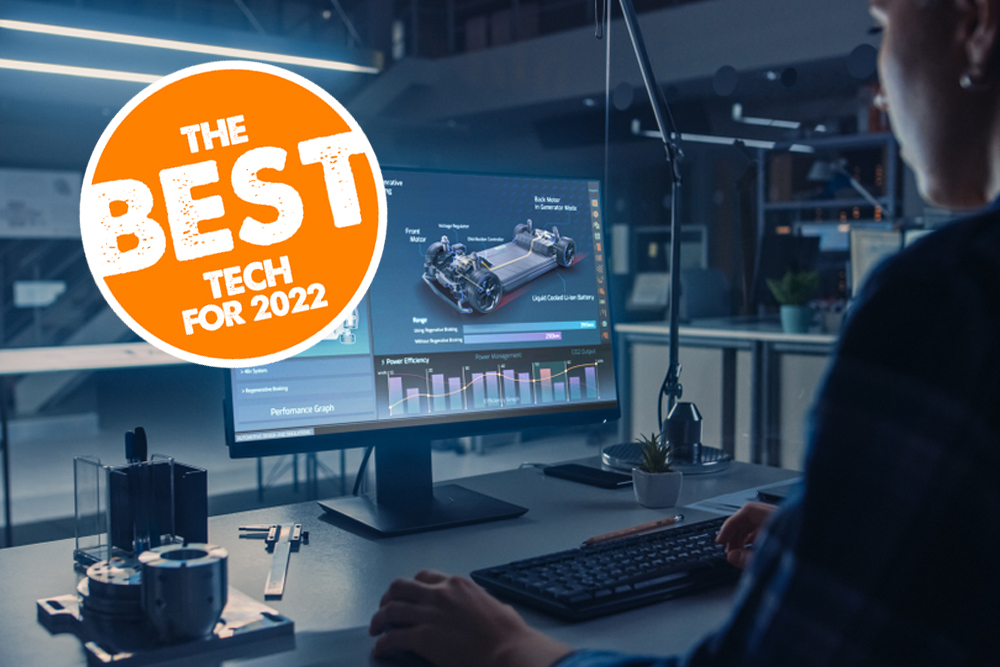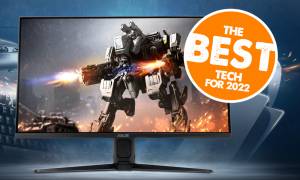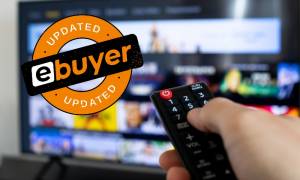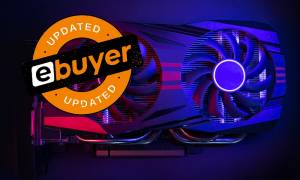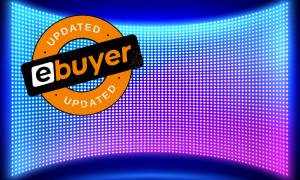AOC 24B2XDAM – 24 Inch FHD Monitor

Besides looking modern and attractive, the frameless design of this monitor enables seamless multi-monitor setups. The Wide Viewing Angle features display color accurately at viewing angles of up to 178°, and it’s Full HD too!
Lenovo L28U-30 28″

This monitor‘s 28-inch 4K display has an ultra-thin bezel, so it’s ideal for work, home entertainment and gaming. Wide viewing angles enabled by the In-Plane Switching panel and low blue light filtering from TÜV Rheinland offer better readability and comfort.
MSI Optix G24C6 23.6″ Full HD Curved

Ideal for gamers due to the curve putting you right into the heart of the action, this is also a good monitor for those who work in the visual arts. It’s also Full HD and has a super-narrow bezel.
Acer EB321HQUC 31.5″
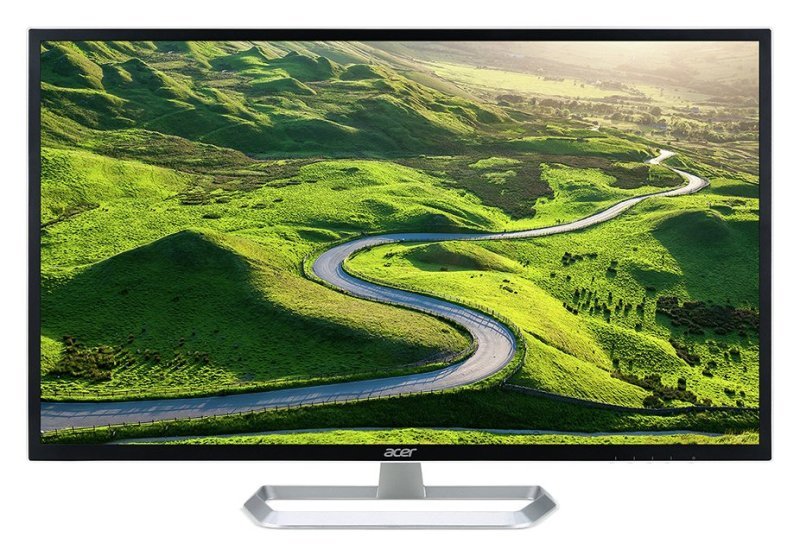
With brilliant 4K resolution this is a monitor which offers great value as well as great performance. With various connection possibilities (such as DisplayPort and HDMI), it’s great for connecting up your other devices.
Why should I think about monitors for business?
You could be the buyer for a large company’s IT department tasked with acquiring seventy-five monitors for staff, or the owner of a much smaller firm who needs to get a couple of new ones for your team. Either way, whether your business is big and corporate or small and DIY, one question will be central to the search for your new gear. That question is: What are the best monitors for business in 2022?
Choosing a monitor can have a definite effect on the comfort, and therefore the productivity, of employees. Gone are the days of just setting up your staff with any old gear. You’re shrewd enough to run your business in the right way, so you also have to be shrewd and careful in the way you look after your staff. Their welfare has a direct bearing on your business. So it’s very important to make sure when the time comes to invest in their gear – a monitor, or many monitors – that you make a solid choice for the benefit of all.
But what does that mean? What is a ‘solid choice’? You’ll know how to be economical sound due to our previous blog on budget monitors, but from a business perspective what are the things you should look out for when you’re about to invest some of your company’s cash?
Shop for monitors and other tech at Ebuyer
What is the best screen size for monitors in business?
This is somewhat subjective, really, as any answer will depend on what you need the monitor for. Computer users who are involved in the creative industries, working in highly visual mediums all the time (such as video, photography and design), will certainly require more screen real estate to be able to do their job effectively. But on the other hand it’s pointless buying an absolutely huge monitor for someone who exclusively works on word process-type tasks.
Over the years monitor sizes have got bigger – and better. By today’s standards the early days of businesses kitting out their offices with 13” or 15” monitors, or 17” or 19” for creatives, seems incredible. When flat screens came to prominence, the cost of the new tech was prohibitive and so workplaces tended to stick with the same size range. But, these days, the size-against-cost balance has… balanced out. You can get good-sized monitors for a price that will not break your bank. Today’s monitors are also better in terms of resolution – but we’ll come to that in a moment. First, a general size guide.
Small-sized monitors
Monitors of 19″ (or sizes below, if you can find them these days) are a practical solution to the problem of tight desk space. Even monitors of these sizes which don’t have top quality resolution can be a reasonable option if the monitor is going to be used for basic tasks.
Medium-sized monitors
This classification means monitors of between 20″ and 24″. Most office monitors tend to be around this size. They’re a decent enough size to be able to have multiple windows or apps open at once, and juggled between, or for a couple of people to gather round to view if necessary. Medium-sized monitors can be thought of as a ‘sweet spot’ between cost and capability.
Large-sized monitors
Monitors of 25″ and above are classed as large, and though they were once the exclusive preserve of photographers, digital artists, videographers and so on, they are now common on the desks of workers of all kinds. They’re a good investment if your workers have to manage several apps, spreadsheets or large-format documentation through the course of the working day.

There are other things to think about when considering screen size – though ‘shape’ is perhaps a more accurate word.
Ultrawide monitors
Ultrawide monitors often have an aspect ratio equivalent to that of a cinema movie. So, the picture is much wider than on a standard monitor screen. These types of monitor are great for visual artists, designers and videographers. They tend to use higher resolutions too, as they are all about maximising the visuals.
For other types of worker, ultrawide monitors offer an alternative to a traditional multiple monitor set-up. Rather than have two standard monitors connected up and being worked across, an ultrawide also means less cable issues!
There is a special consideration to make with ultrawide monitors (in fact, with any large monitor that has advanced display resolutions). It’s crucial that the PC the monitor is connected to can support monitor’s capabilities. Not all PCs / graphics cards can support 4K or Full HD, though increasingly these are becoming the norm).
Curved monitors
Curved screens are mostly a ‘gaming thing’ – offering the player extra immersion in their game due to the monitor’s left and right edges curving out towards the viewer. Few businesses would require curved monitors – though there is a case for those working in the visual arts, specifically video, to think about them.
Resolution
This is important. HD (High Definition), Full HD, Quad HD, 4K, etc… All terms you will no doubt have heard bandied about in recent years. What do they refer to? They each refer to a specific screen resolution (ie. the number of pixels on the screen). Top resolutions such as 4K offer almost unparalleled quality in our televisions, with extremely sharp images. It’s not exactly necessary for ‘standard’ office workers to have 4K monitors but, again, they can be a great investment for those working in the visual arts or design fields.
Refresh Rate
This is perhaps more important to gamers than it is to those who are looking for monitors for a professional environment. But it’s still something worth considering for anyone working with footage of any kind. What is monitor refresh rate? It’s the number of times per second that your monitor updates with a new image. For example, a 60 Hz refresh rate means that the display updates – yes, you guessed it – 60 times per second. The higher the refresh rate the better, usually. But, as we just said, in some cases this isn’t always the most important thing to look for.

There are other things you can think about when considering what are the best monitors for business in 2022.
Touch screens
The way we interact with our smartphones has changed radically in the last ten years. Touch screens have become the norm, and this important development is also a big part of modern computing. Touch-sensitive monitors allow you to interact with Microsoft Windows and other modern operating systems which are designed for use primarily with that kind of device in mind.
Viewing angle
The viewing angle of a monitor is worth considering, too. How far off-centre can someone go yet still see the screen in perfect clarity? Most monitors these days have excellent viewing angles. The way to work this out in your head in advance of purchase is to divide the stated viewing angle in half. So, in effect a 170-degree viewing angle means that the computer user would still be able to see the screen clearly if they were looking at it from a position 85-degrees off-centre.
Browse the Ebuyer website for monitors and more!
Bezels
The term refers to the portion of your monitor around the screen which isn’t the actual screen itself. In effect, the plastic ‘frame’ of the screen. These days more and more monitors are produced with very thin bezels, enhancing the user’s focus on the screen itself. In multiple monitor set-ups, models which have only a very thin bezel are most effective, to almost give the illusion of one continuous screen and an almost uninterrupted view of work.
These are the things which we consider to be the absolute essentials when considering monitors for the workplace. As ever, we stock a vast range of monitors to suit all home and business needs, and you can check it out here.

